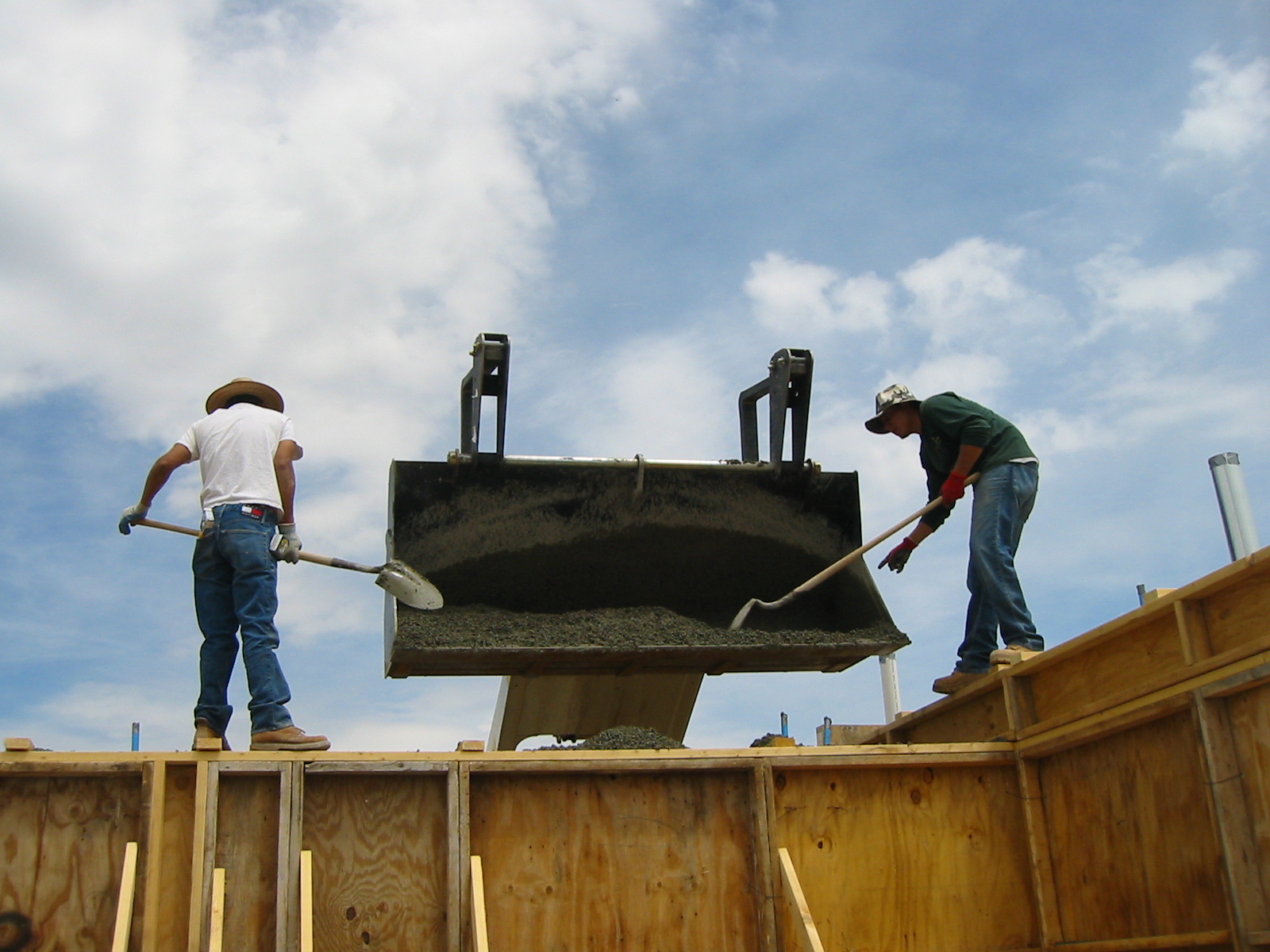Warm Walls in Winter
The house we built in Taos is made of pumice-crete and has Trombe walls. Before we moved here six years ago, I had heard of neither. But our contractor, Beau, explained both would make an energy-efficient home.
Shoveling pumice-crete into the forms. Pumice-crete is a mixture of pumice aggregate, cement and water. (The pumice comes from the remnants of volcanoes that give parts of our state a pre-historic landscape.) The mix was trucked in and poured in forms that created the walls of our home. The pumice-crete has a honey-comb texture when it dries. Sealed by adobe outside and plaster inside, it has a high r-value.
Now for the Trombe walls. Technically,
they are walls with a high thermal mass used to store the sun's energy
passively. I read that Felix Trombe, a French inventor, popularized the
design in the early sixties but Edward Morse obtained a patent for it in
1881.
For our house, large, rectangular
cutouts were left in strategic places when the walls were poured. After
the forms were removed, the workers filled the openings with masonry
block, which were painted black and later covered by large plate glass.
There is a space, I don't know how deep, between the glass and block.
These are called Trombe walls.
We have three Trombe walls in the great room, two in the main bedroom, and three in the garage/shop. From the road it looks like we have a lot of picture windows in the front.
Because the house is built facing due-south, the suns rays hit the Trombe walls and that heat is transferred inside. On a sunny afternoon, the interior walls are warm to the touch and last that way through most of the night. Even now, 8:30 Mountain Time, I feel the warmth held deeply in the Trombe wall beside the kitchen table.
And, an overhang on the roof prohibits the sun's rays from reaching the Trombe wall so they don't heat up during the summer.
The only drawback is the rare period of
cloudy days. That's why we bought a small wood stove, a Mørso with a
sweet European squirrel engraved on its sides. It takes one or two logs
and does the trick. We use the woodstove as a complement to the Trombe
walls, burning about one cord of softwood a winter. Last year we used
less.
The nights get very cold. Yesterday it
was minus-8. The day before minus-9. I didn't look today. But these
simple innovations help keep us warm in Northern New Mexico.
